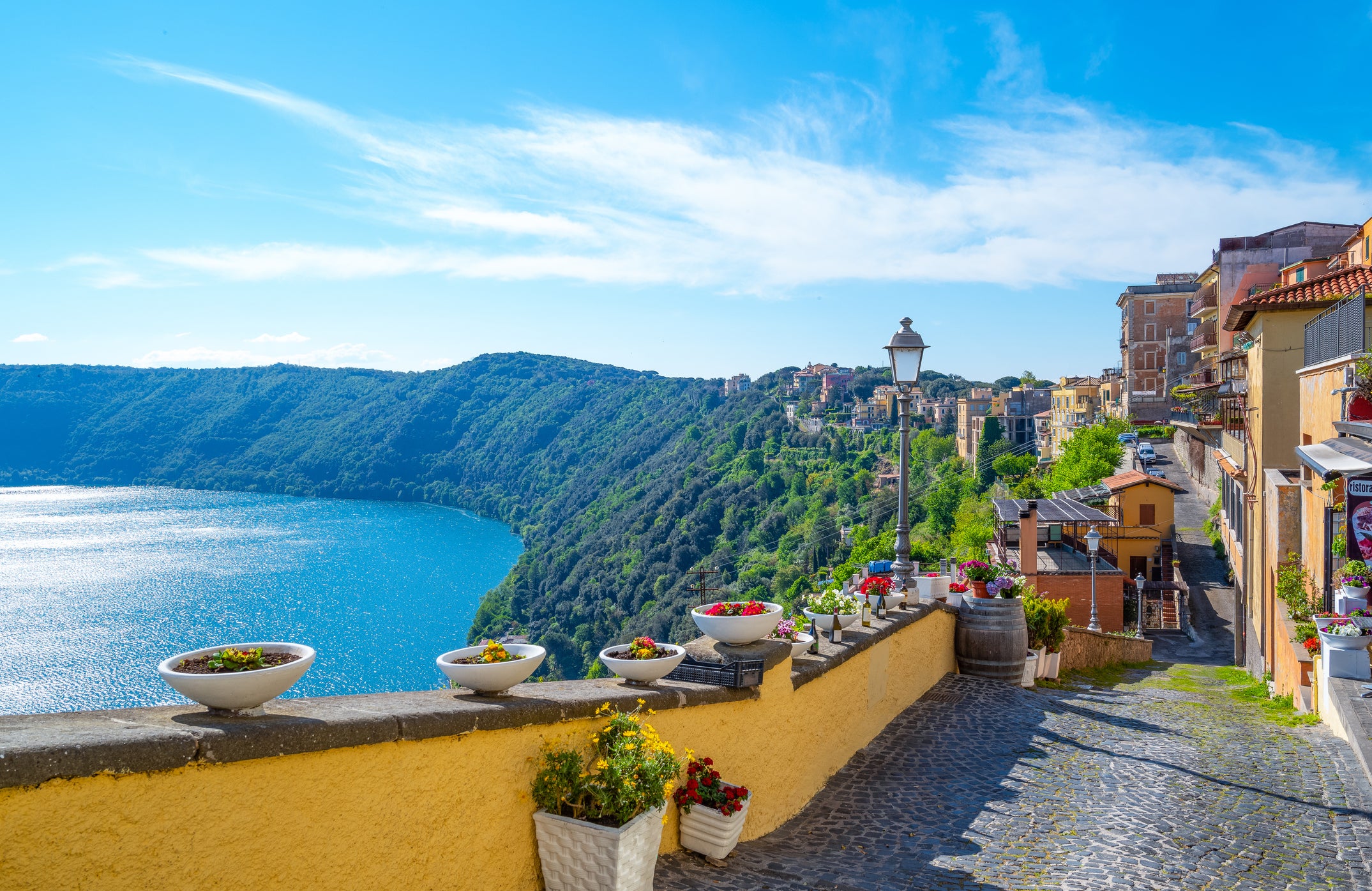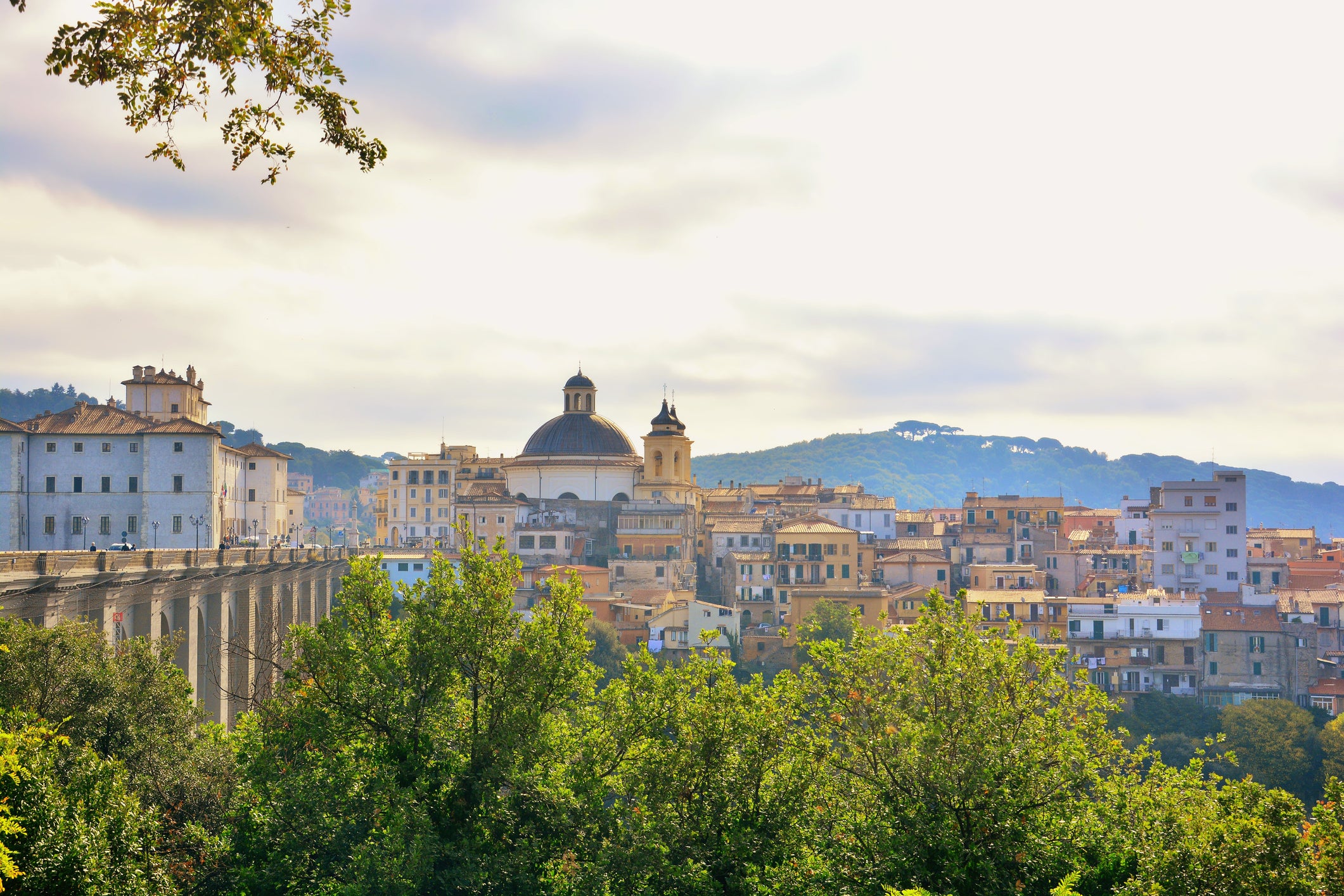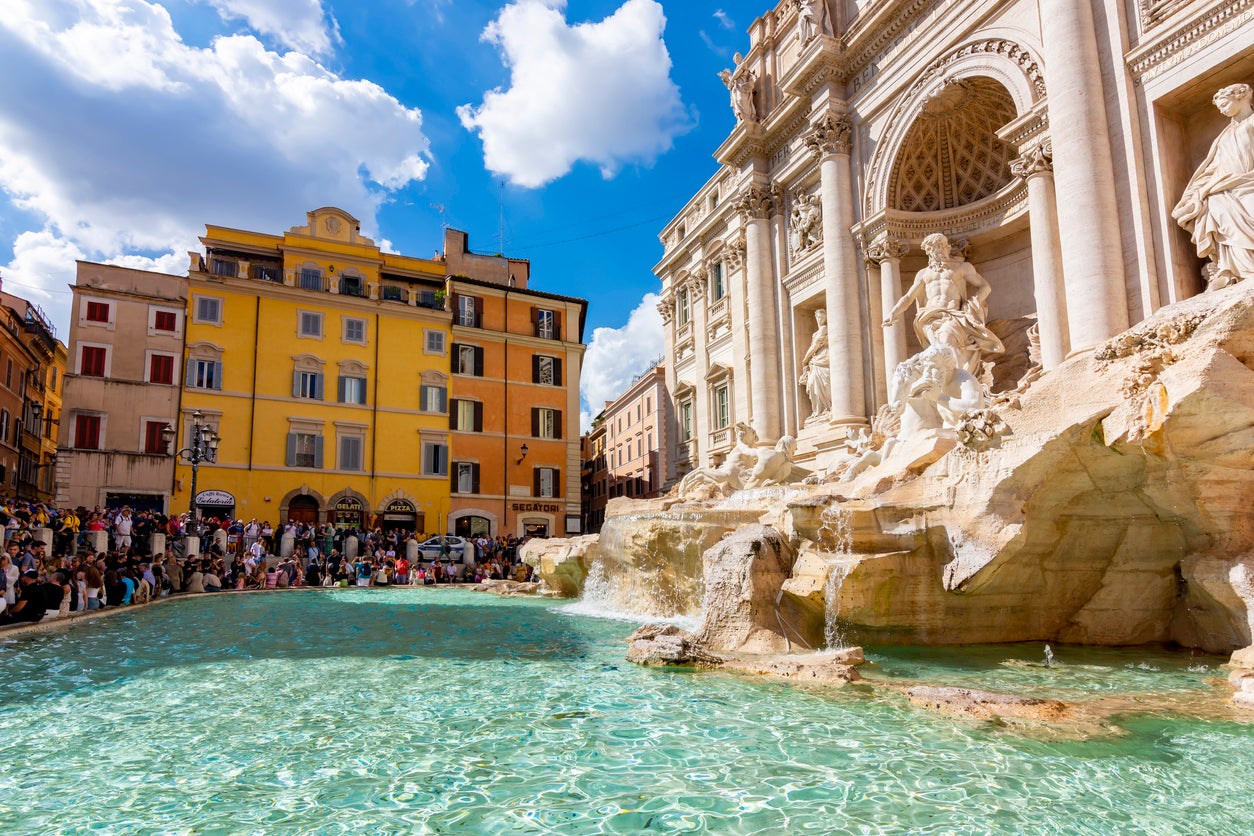The Independent's journalism is supported by our readers. When you purchase through links on our site, we may earn commission.
Villages, vineyards and volcanic lakes – the delights beyond Rome’s borders
Looking to escape the crowds in one of the most popular regions of Italy, Sophie Goodall holidays as the Romans do and explores Castelli Romani

A fig tree, dropping with fruit, ruffles in the breeze. My guide, Federica, points and cries: “The typical Roman breakfast – focaccia, ham and fig. It’s the perfect balance of sweet and salty. But these figs are unlike anything you would get in England.”
And neither are the views.
A vast turquoise lake stretches out below me, fringed by dark green Mediterranean pines. From my vantage point, high up in the hills, I can just make out tiny paddle boarders on the surface of the water. In the distance, the pale blue Mediterranean Sea twinkles.
As for the Roman breakfast – we are only a stone’s throw away from the Italian capital.
I’m in the picturesque town of Nemi, one of several medieval villages making up the Castelli Romani region, which sits within the crater of the ancient volcano Vulcano Laziale.
It’s situated on the southern lip of Rome – only 22km from the city centre, made accessible by a direct train service that speeds through the Lazio countryside in just under half an hour.
Read more on Italy travel:
An escape from the city

While the Eternal City is packed with iconic attractions and a bustling atmosphere, the idea of extending my city break by a couple of days to take in calming vistas of winding hillside trails, chestnut trees and quaint villages was simply too inviting.
With its high altitude and wide open spaces, this sunny region has its own refreshingly cool microclimate, making Castelli Romani a popular holiday destination for Romans – including several popes, who once had a summer residence here in Castel Gandolfo.
While I’m content to meander down cobbled side streets, soaking up the sunshine with a gelato in hand, I soon realise there is much to discover behind the facade of these quiet villages with their deserted town squares.
Community identity
Nemi, for example, is a vision of paint-peeled, sun-bleached buildings with wooden shutters and terracotta tiles – but it’s prettiest attraction by far is it’s vast lake at the bottom of the valley.
It’s a draw for holidaymakers wanting to relax by the shore, but its banks serve a far greater purpose for the town. The mineral-rich soil is perfect for growing tiny wild strawberries that have become synonymous with Nemi.
So beloved are these pint-sized fruits, residents throw a strawberry festival each year. On the first Sunday of June, women don traditional costume to host parades. Celebrations culminate with fireworks over the lake.
Marco, my tour guide, tells me that Castelli Romani residents have such a deep affinity with their hometowns – everyone believes theirs is the best – that each community has its own identity.

Neighbouring town Ariccia takes great pride in its porchetta, a joint of slow-roasted pork sliced wafer-thin.
Ariccia is home to the fraschetta, a rustic restaurant typical of the Castelli Romani region. I head to Osteria N.1, where I devour a platter of juicy and tender porchetta, served with apple slices, olives, and ricotta doused in honey.
As I finish my plate, I realise how wrong I was to expect my diet in Italy to consist only of pizza and pasta. Yet I was not wrong to expect plenty of wine. This region’s volcanic soil isn’t just fertile for strawberries – it’s also great for growing grapes.
Verdant vineyards
At Tenimenti Leone, an organic winery outside Lanuvio, the Alban Hills protect vines from the cold, while cool winds from the coast regulate hot temperatures making production high.
Grape pickers have a lot of ground to cover; the 72-hectare estate features 11 vineyards. Native varieties bellone, malvasia puntinata and cesanese are made under the Roma DOC and Lazio IGP designations, and as part of my tour of the vineyard (from €35/£30pp) I’m lucky enough to sample wines made from these blends.
One of them, Core, is a fruity, fresh and herbal white wine, and a delicious accompaniment to bread dunked in Tenimenti Leone’s own-grown olive oil. For years, the winery was a fruit and veg farm ran by monks, who stored their produce in ancient caves underground.
Ancient architecture
From caves to churches, Castelli Romani is an area renowned for its ancient architecture. The picturesque town of Castel Gandolfo, by Lake Albano, is a shrine to the work of Baroque architect Gian Lorenzo Bernini.
Piazza della Libertà, the town’s main square, is the perfect place to sit at an outdoor cafe and sip an espresso.
I watch villagers hop off their bicycles and stop to drink from the fountain, before heading to the large church of Collegiata di S Tommaso da Villanova looming over the square. Inside, in typical Bernini style, it’s a marvel of white arches gilded in gold and colourful religious artworks.
Roman holiday
But it’s not just these villages that bear Bernini’s work – he also turned his hand to some of Rome’s most iconic landmarks, such as the Spanish Steps, St Peter’s Basilica, and the Trevi Fountain.
Witnessing these awe-inspiring, historical works of art is enough reason to book a trip to Rome, but it’s true that the hot spots can become breathlessly jammed with throngs of tourists – especially during the peak summer season.

Visiting in spring and autumn is ideal – being sure to avoid religious holidays. Shoulder season also ensures you won’t be a victim of the searing heat gripping hold of southern Europe in July and August. Even in mid-May, at a steady 26C, things are getting toasty.
But by following in the footsteps of Italy’s many wise popes, a heavenly, hillside destination awaits.
How to plan your trip
ITA Airways operate a new nonstop route between Rome–Fiumicino Airport (FCO) to London City Airport (LCY), with business class available. Flights also available from Manchester, Bristol, Newcastle and Glasgow.
Read more: Italy travel guide – everything you need to know before you go
Subscribe to Independent Premium to bookmark this article
Want to bookmark your favourite articles and stories to read or reference later? Start your Independent Premium subscription today.

Join our commenting forum
Join thought-provoking conversations, follow other Independent readers and see their replies
Comments